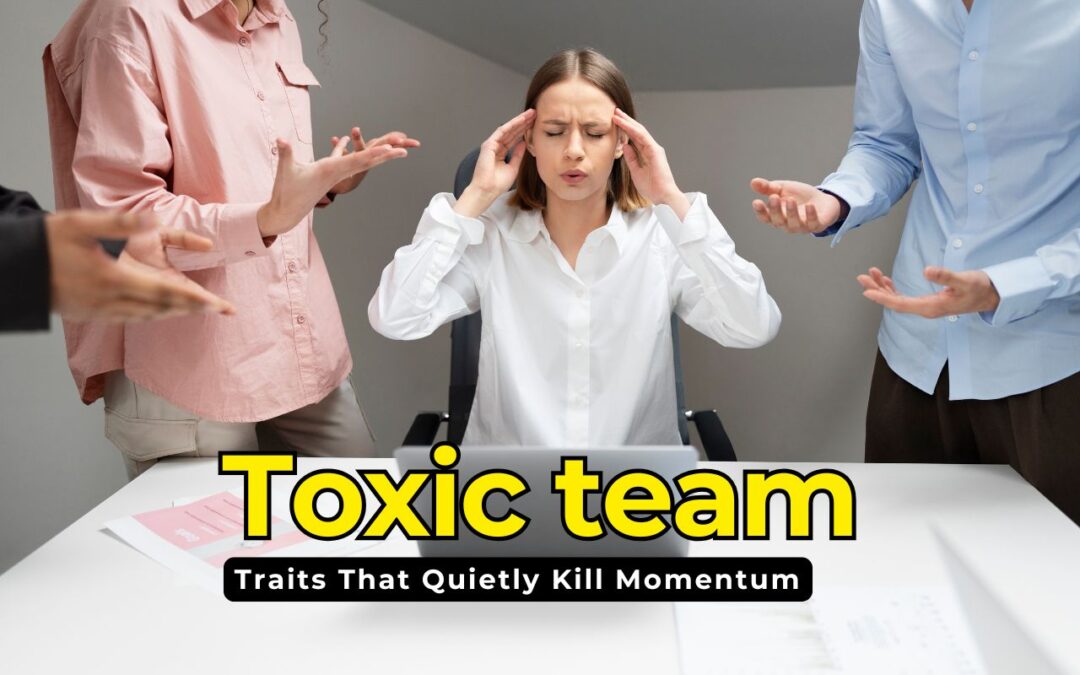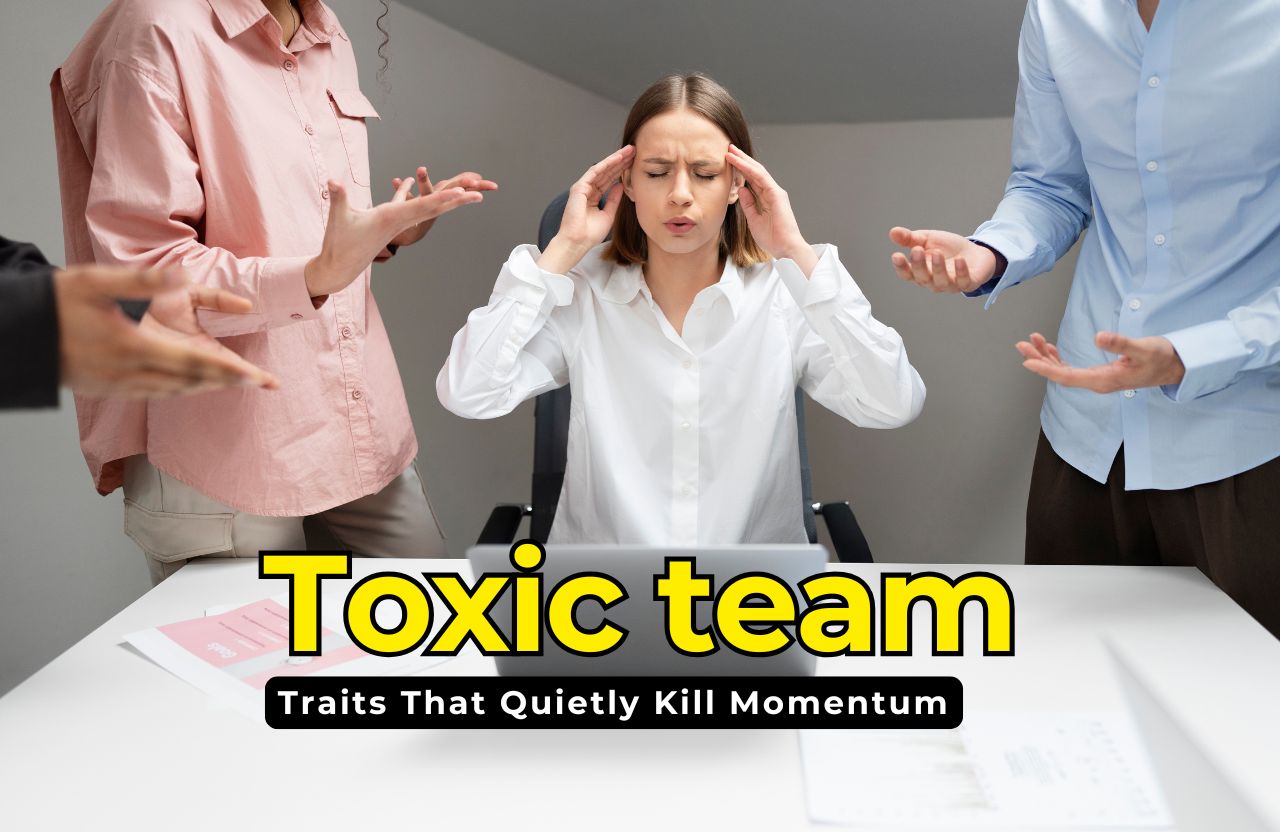In today’s competitive world, success depends much on strategy and innovation. However, a common yet underrecognized threat is internal dysfunction within your team. Toxic team behaviors ranging from distrust to blame culture can erode quietly, slowing progress and eventually derail your growth path.
If your team dynamics are broken, then even the best strategy will not suffice. Let’s examine seven momentum killers that destroy it, how they creep in and what you can do about it.
1. Lack of Trust: The Silent Collaboration Killer
When team members are not trusting each other , their leadership will stop sharing ideas and taking risks. This leads to silos, unnecessary duplicated work and a fearful situation in which true innovation is impossible.
Fix: Model authenticity and vulnerability, encourage dialogue and facilitate psychological safety amongst your team.
2. Poor Communication: Where Momentum Fades
Ambiguous messaging, canceled meetings and unexpressed feedback can derail deadlines and burn away clarity. Without clear, consistent communication, alignment dissipates and energy leaks.
Solution: Create ground rules for openness, regular updates and positive feedback to keep momentum flowing.
3. Micromanagement: The Silent Innovator Killer
Micromanagement can disguise itself as control; however, it represents distrust. When team members feel continuously monitored, not trusted, worried about making a wrong decision. Innovation, initiative and passion diminish and team members become disengaged.
Fix: Allow for autonomy, communicate and shift from taking control of the process to coaching towards an outcome.
4. Blame Culture: When Mistakes Have Repercussions
When blame culture exists, individuals almost become paralyzed with dread at the thought of taking responsibility for mistakes and innovation ceases. The result is defensiveness and accountability halts.
Fix: Foster failure as a learning opportunity, emphasize solution-seeking over finger-pointing and reward progress flaws included.
5. Resistance to Change: The Hidden Growth Blocker
If change is resisted, things grind to a halt. Due to fear, uncertainty or simply inertia, some members of your team go quietly into becoming blockers of momentum.
Solution: Engage your team early on in change initiatives, share the “why” before the “how” and open up collaboration in determining outcomes.
6. Toxic Competition & Cliques: The Enemy of Collaboration
Toxicity in competition occurs when individuals withhold information, undermine others or create cliques. Such behavior shatters trust and prevents collaboration across functions.
Solution: Reward team successes, job-swap and promote cross-functional partnership to dissolve silos.
7. No Recognition & Appreciation: The Motivation Drain
Undervalued employees withdraw effort or quit. Small and formal recognition plays a crucial role in maintaining engagement and slowing turnover. Make appreciation a part of daily routine. Publicly praise contributions and make feedback personal where feasible.
Why These Behaviors Kill Momentum & Stall Growth
- Culture drives retention: Toxic habits degenerate engagement in a high-performance context also leads to disengagement and resignation.
- Innovation comes to a halt: Fear takes over, killing and creativity.
- Burnout accelerates: Teams operating in blame or distrust tend to burn out quickly. If these behaviors persist long enough, even well-coordinated strategies lose momentum.
FAQs: Understanding & Overcoming Toxic Team Behaviors
1. What are typical toxic team behaviors?
The absence of trust, poor communication, micromanagement, blame culture, resistance to change, internal competition and no proper recognition.
2. How do toxic dynamics affect growth?
They diminish innovation, increase attrition, hurt morale and slow overall progress.
3. Are toxic teams able to change?
Yes, with leadership commitment, feedback openness and ongoing reinforcement of desirable behavior.
4. What is the role of leadership?
Leaders create the tone-transparent, compassionate and open communication can reinforce trust and rebuild culture.
5. How do I recognize a blame culture?
Workers shy away from risk or cover up mistakes, prioritizing defense over solutions.
6. What is the ROI of recognition?
Teams who feel appreciated are more engaged, productive and less likely to leave.
In Closing: Is your team slipping and you don’t know it?
Toxic team behaviors masquerade as part of everyday work but their effects are real and additive. The bad news? You don’t require a system reboot to make changes.
Incremental steps add up:
- Take an honest culture check
- Arm managers to lead with empathy
- Reward collective action
- Remove micromanagement, inject autonomy
Ask yourself:
- Do individuals feel safe to speak up?
- Are mistakes viewed as learning opportunities or reasons to blame?
- Are you team aligned or siloed?
If you said “no” or “maybe” it’s time to take action! Great business growth is not about strategy, it is about empowering a healthy team.
What toxic behavior have you seen in the workplace? Leave a comment below and let’s begin a thought-provoking discussion about getting team momentum back on track.













